No pay, much worry, 24-hour days: Alzheimer’s care at home — the mounting cost of love
Everyone who knew Ellen DeFoe, back before Alzheimer’s turned her brain against her, thinks of her the same:
She was the kind one. Ellen, with her hair swept up and lipstick always immaculate, was the one who would help anyone — bring food, run an errand, clean a neighbor’s house without a second thought.
Even after cancer took her left breast, it was she, running her business, Electrolysis By Ellen, who felt the need to put customers at ease, joking and telling people to pardon her prosthetic “boob.”
“Her passion was people,” said her daughter, Tami DeFoe. “No matter what she did, she put her heart and soul into helping other people.”
Which is why DeFoe said her mother, now age 83, would be aghast to know just how many caregivers over the last 15 years have worked and sacrificed to care for her as her dementia has progressed, stealing not just her memory, but also her ability to walk and talk or feed or bathe herself.
Ellen’s husband, Dale, was her caregiver at their home in St. Joseph in the five years before he died of a heart condition in 2012. DeFoe vowed to her father that she would never place her mother in a nursing home. “I could never do that to her,” DeFoe said.
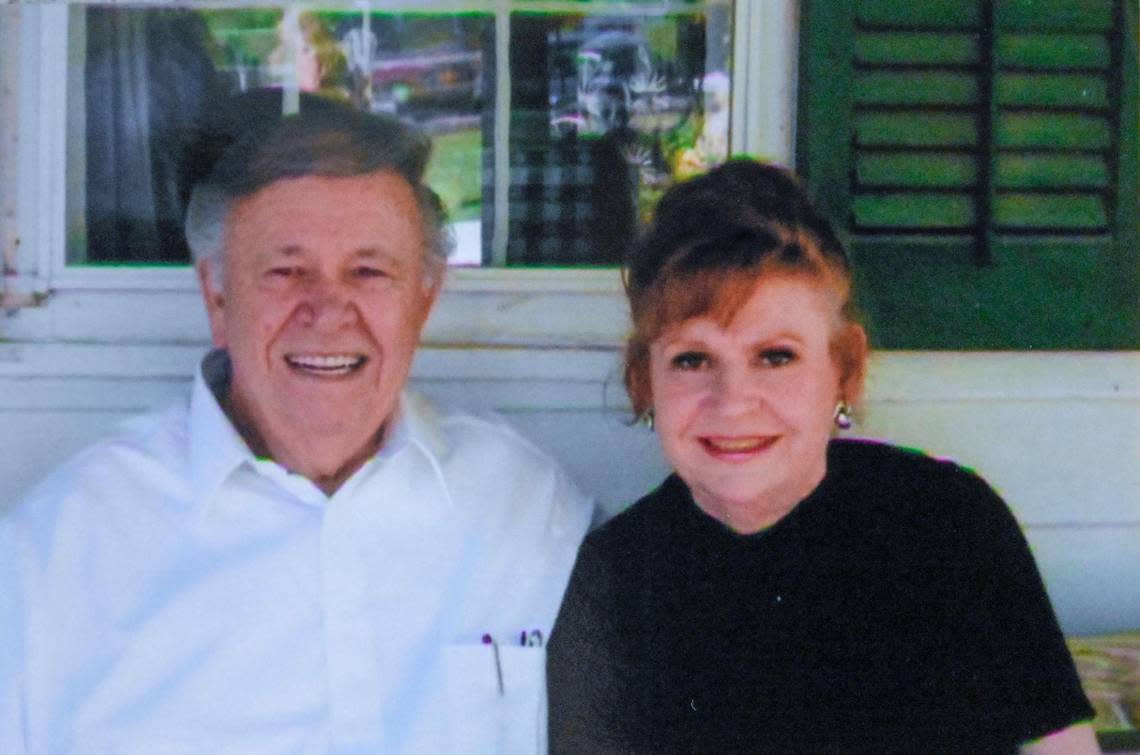
She instead found caregivers who would take $100 daily, plus food and gas money, to stay and care for her mom in her home 24 hours a day, even as DeFoe’s and her mother’s bank accounts drained.
“She has no savings. It’s all gone,” said DeFoe, 58. “My savings is gone, too.”
Financially, Ellen, who had worked her entire life, is now impoverished enough that she would likely qualify for Medicaid and, as such, receive care in a nursing home. But a promise is a promise.
DeFoe’s story is one among millions that highlights the emotional, physical and financial difficulties of Alzheimer’s care at home. For America’s over-stressed families, it is a difficult option that’s only becoming harder.
Some 6.5 million people in the U.S. suffer Alzheimer’s disease. Of them, the Centers for Disease Control and Prevention estimates 80% are cared for at home by 16 million “informal” caretakers. Many, like DeFoe, do so out of love and devotion, while others feel forced. Not impoverished enough to qualify for the benefits of Medicaid, they nonetheless make too little to afford private care, such as the average $7,000 a month it costs for a private nursing home.
Whatever their reasons, at-home caregivers now comprise a vast and typically unpaid workforce of friends, neighbors, spouses, children, in-laws and others. Their number equals 5 million more than the entire workforces of Walmart, Amazon, McDonald’s, Ford, General Motors, Federal Express, Home Depot, Starbucks, Nike, Coca Cola and the U.S. military combined.
Scared for the future
In March 2019, DeFoe — who labors full time with bad knees and a tender back cleaning houses for a living — arranged for her mother to be cared for 24/7 in the Kansas City home of Carol Dowell, her ex-sister-in-law and Ellen’s former daughter-in-law. Dowell, 57, always liked Ellen even after the marriage to her son ended.
Feeding, cleaning, bathing, dressing, tending to Ellen day and night, Dowell is paid the equivalent of just over $4 an hour. At the same time, Dowell’s husband, Brian, a retired truck driver, moved back to Green City, Missouri, to care for his own ailing father, as his mother lay in a care facility with Alzheimer’s. She died in 2020. He lives there still, caring for his dad.
“My normal life, as it was, is no longer,” Dowell said. “I don’t have a life outside of here right now.”
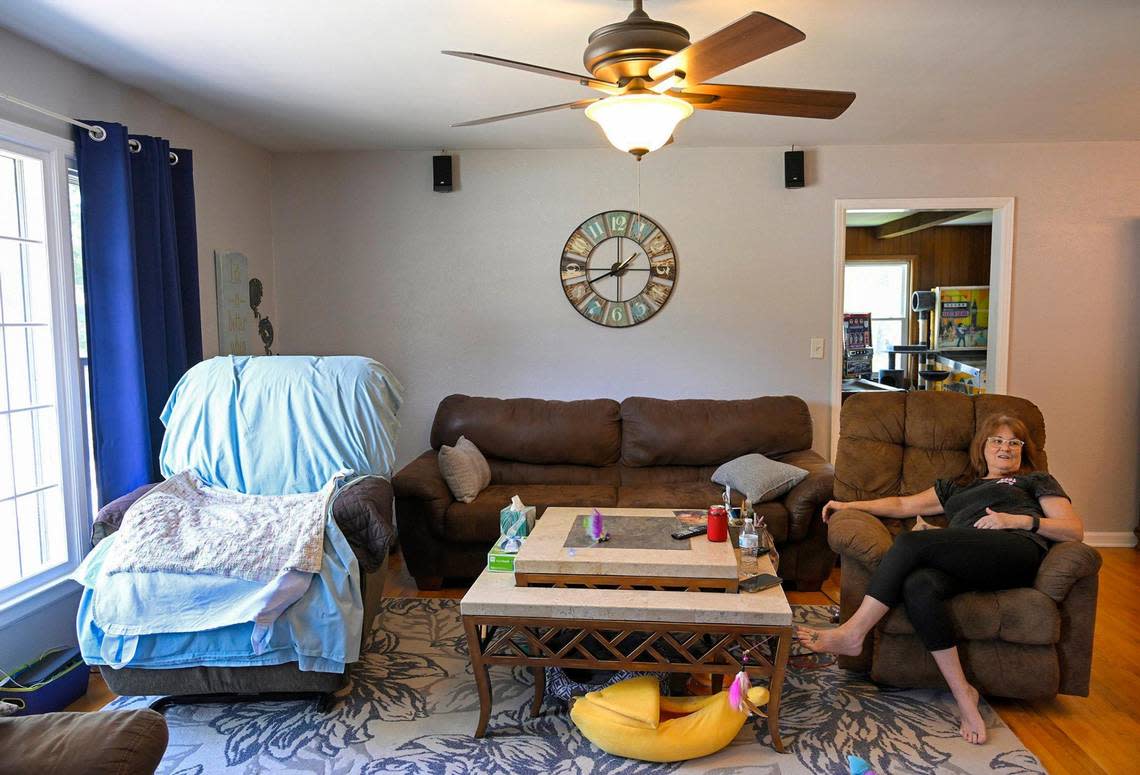
As numerous reports point out, such care often comes at a dire cost to caregivers, ranging from depression and anxiety to physical and financial collapse.
Going beyond Alzheimer’s and dementia alone, the American Association of Retired Persons, in its 2020 report, “Caregiving in the U.S.,” estimated that one in five adults in the U.S., meaning some 53 million individuals, provided care to an adult or child with special needs in the 12 months prior to the report.
Of those, a quarter of caregivers had taken on debt, 30% had stopped saving and 10% had quit their jobs or retired to care for a loved one. The Alzheimer’s Association estimates that in 2022 alone, lost income from family caregiving equaled $271 billion.
Forced to balance care against costs, many caregivers opt to leave their full-time jobs rather than face the prospect of placing a loved-one in a nursing home or paying the $25 to $45 it can cost for an hourly caregiving service. Some caregivers move away from their homes, cities, marriages and children to take up residence with their loved ones. Still others transform parts of their homes into hospital rooms as they become 24-hour nurses.
One looming question is whether, in coming years, the entire system that depends on family and friends to care for others could eventually crack under the strain of demographic shifts.
The dilemma: Who will do the caretaking in a society where couples have had fewer children, where adult children live hundreds or more miles away from their parents, and where few people, whether married or single, can afford to take time away from needed paychecks?
“Unfortunately,” said Amy Goyer, AARP family caregiving expert, “the future is that all of us who are caregivers are depleting our finances to care for our loved ones.”
Goyer’s knowledge is more than academic. A resident of Alexandria, Virginia, she was a caretaker for more than 12 years, first for her mother after a stroke, and then for her father who died of Alzheimer’s.
“I ended up in bankruptcy,” said Goyer, declaring it in 2019.
A moderator for an AARP Facebook Caregivers’ Discussion Group, Goyer asked others how in-home caregiving affected their finances.
“Keeping our heads above water, barely,” one person posted. “We have sold just about everything including our house. ... Using my retirement already and haven’t even turned 60 yet. The money will run out quickly I’m afraid.”
Wrote a daughter whose mother suffered dementia: “I had to quit working to take care of my mom. I don’t know how much longer we can keep this up.”
Dignity and compassion
DeFoe feels fortunate to have her former sister-in-law willing to care for her mother full time.
Easy-mannered, joking often, Dowell has transformed a bedroom in her Kansas City home into a stocked care room, with a hospital bed that she got from a friend. There is a contraption called a sit-to-stand lift that allows Dowell to use a harness to hoist and transport Ellen from her bed to the living room to the dining room table, and also allows her to be bathed and use the toilet.
“Hello, good morning,” Dowell chimed to Ellen one early morning, getting her day started around 7 a.m. “Hi. I like that smile. I like that smile. Can you open your fingers? Can you open your fingers and hold my hand?”
But recently Dowell saw how the hoist was harder on Ellen, painful with her contracting muscles to hold on. So now Dowell, standing 5-foot-4, with her own neck, back and shoulder problems, labors to move Ellen on her own.
“I figured I’ll take the brunt of it,” Dowell said.
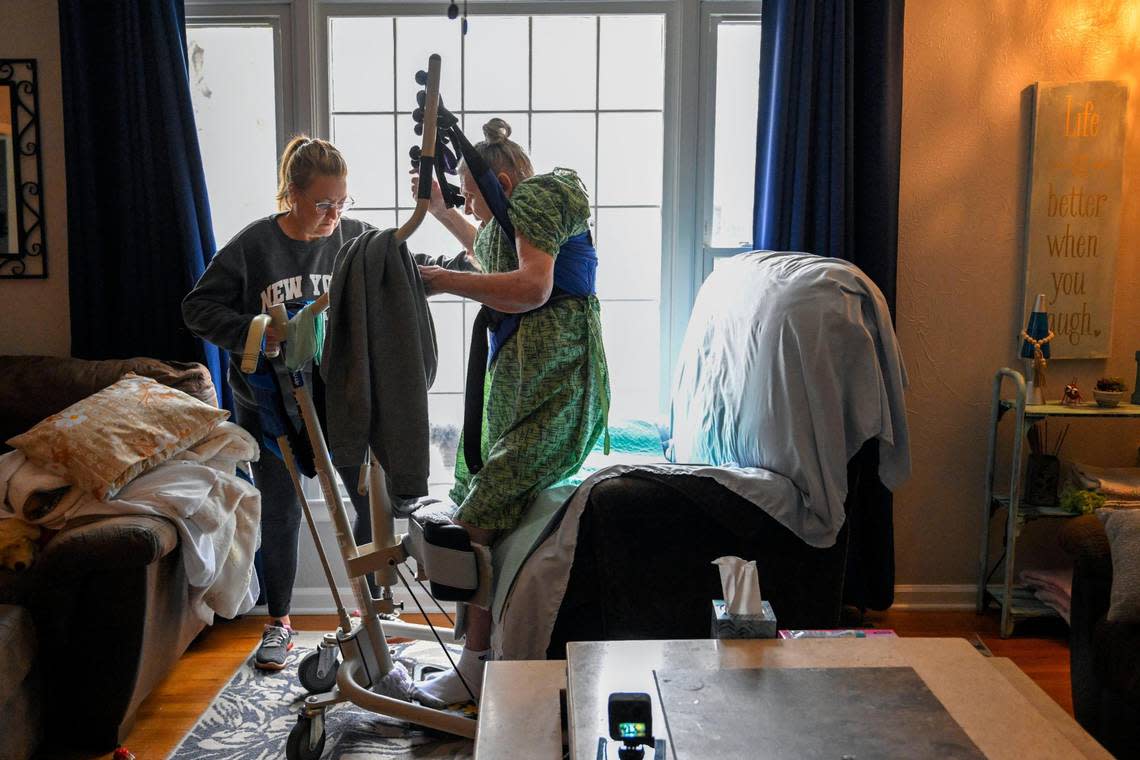
A mother and grandmother, with four adult children, Dowell had never been a full-time caregiver before Ellen.
She married Ellen’s son, Troy, when she was 19. They had a son, Houston, before divorcing young and before Dowell remarried twice more, having two boys and a girl. Dowell worked as a Realtor, as a travel agent and in optical shops until, in 2017, she took a job in the ophthalmology department at the University of Kansas Hospital. But it didn’t last.
“I started getting anxiety out of nowhere, causing panic attacks,” Dowell said. “I had to quit.”
Her knowledge of Alzheimer’s was limited before caring for Ellen. Dowell’s husband had an aunt diagnosed with it prior to his mother also being diagnosed.
“We’d have to remind her who we were,” Dowell said.
Dowell back then thought that it mostly was a memory disorder that was part of aging, as opposed to what it really is: a degenerative brain disease that spreads, shrinks the brain and gradually disrupts the body’s most basic functions.
It was around February 2018 that DeFoe needed another caregiver to add to her others, someone who could stay in St. Joseph with her mother for two or three days, actively caregiving during the day and sleeping in the house overnight.
Ellen receives income from Social Security and her late husband’s veteran benefit. Although her income is small, it’s still too much for her to quality for any of the home and community-based services — like bathing help, meal deliveries or shopping — available through Missouri Medicaid, known as MO HealthNet.
To Dowell, the job seemed perfect. She liked Ellen. It paid $100 a day in Ellen’s home, not an office. It would just be the two of them and seemed less stressful.
Diagnosed at age 68 in 2007, Ellen had already suffered Alzheimer’s for 11 years by the time Dowell became one of her three caregivers. Ellen’s ability to talk by then was already limited to vague yeses and nos. She could still pick up a plate, feed herself with a fork, drink from a cup, dapple the water in the sink. She could walk, though slowly. She may have recognized her daughter.
“She’d turn and smile at me,” DeFoe said. “I think she knew who I was, but couldn’t vocalize it.”
But not Dowell. “She had no idea who I was,” she said.
Then, in November 2018, on a day Dowell was off and Ellen had a different caregiver, Ellen fell, striking her head against the edge of a table. From then on, she could barely walk.
“She lost all of her balance,” Dowell said. She eventually stopped walking altogether.
Dowell decided four months later that it would be easiest if Ellen moved in with her into her Kansas City home, at least temporarily — a period that has since stretched to nearly four years.
Dowell each morning talks to Ellen as she wakes, eases her onto the toilet, rolls her to the living room, transfers her into a recliner near a window.
“Sometimes she looks out at the birds or squirrels,” said Dowell, who said her goal is always to treat Ellen with the dignity and kindness her daughter knows she deserves, and to give her as normal a life as possible.
“I know that she would have done this for me,” Dowell said. “She would do anything. She was the one in the family that if you needed something, she was the one there to do it. It didn’t matter what time of day.”
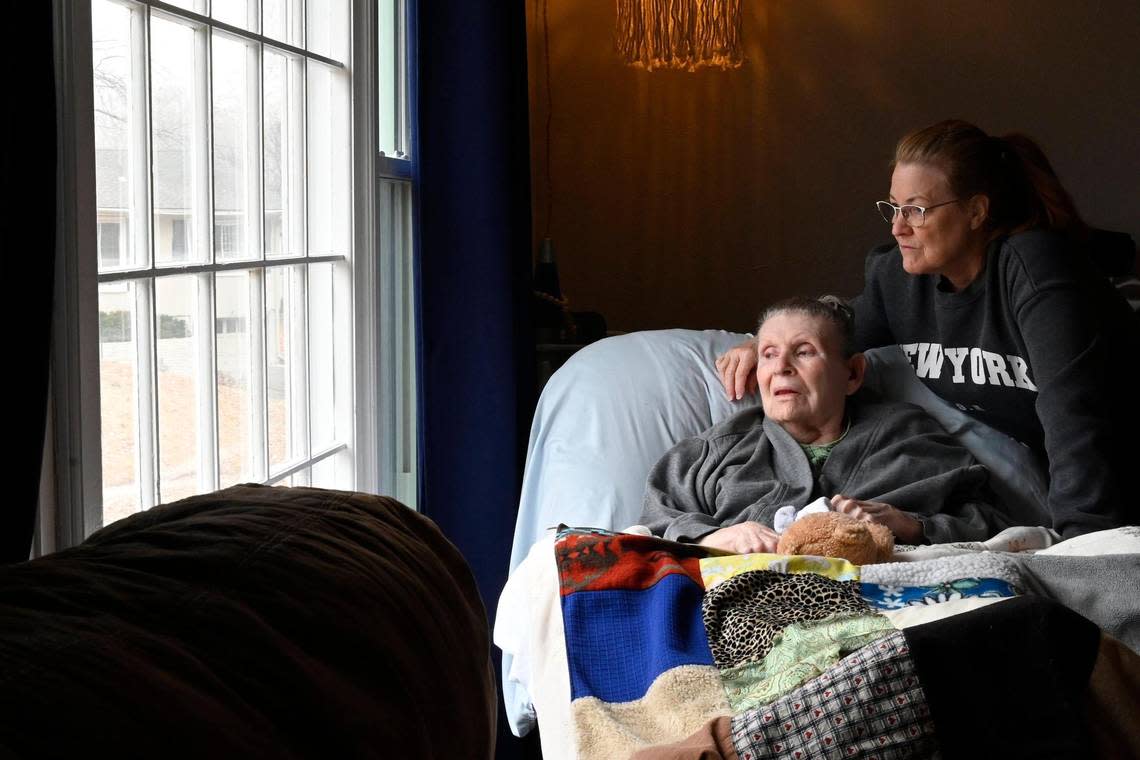
Dowell knows that her caregiving would be far more arduous if Ellen could still walk. Her inability means she cannot wander, leave the house, get lost, fall, or venture into the kitchen to cause a fire or flood by leaving a faucet on.
“When they’re mobile, you have to watch them constantly,” Dowell said.
Ellen, instead, sits in a lounge chair several feet from the television, where she mostly sleeps, or stares at her lap. Dowell plays soft Christian music throughout the day.
“She loves Carrie Underwood’s ‘My Savior,’” Dowell shared. “She moves her toes.”
Ellen has been on and off hospice four times since her diagnosis. When she is on hospice, paid for through Medicare, a nurse comes regularly to check her status. An aide visits Ellen to bathe her. Her wheelchair does not fit through the bathroom door. Nor can she step into the bathtub for a shower. So instead Ellen is bathed twice a week in her own room, with Dowell and the hospice worker using 2-liter water bottles and a refrigerator pan to catch the soap and water.
For breakfast, lunch and dinner, Dowell moves Ellen to the dining table. A single meal can take an hour, sometimes two.
“I basically have to feed her. She swallows on her own,” Dowell said, although even that can be difficult when Ellen breathes in and chokes on the liquids she drinks.
“She’ll eventually get to the point where she probably won’t eat at all,” Dowell said. Both she and DeFoe are convinced that were it not for such attentiveness, Ellen would have died long ago.
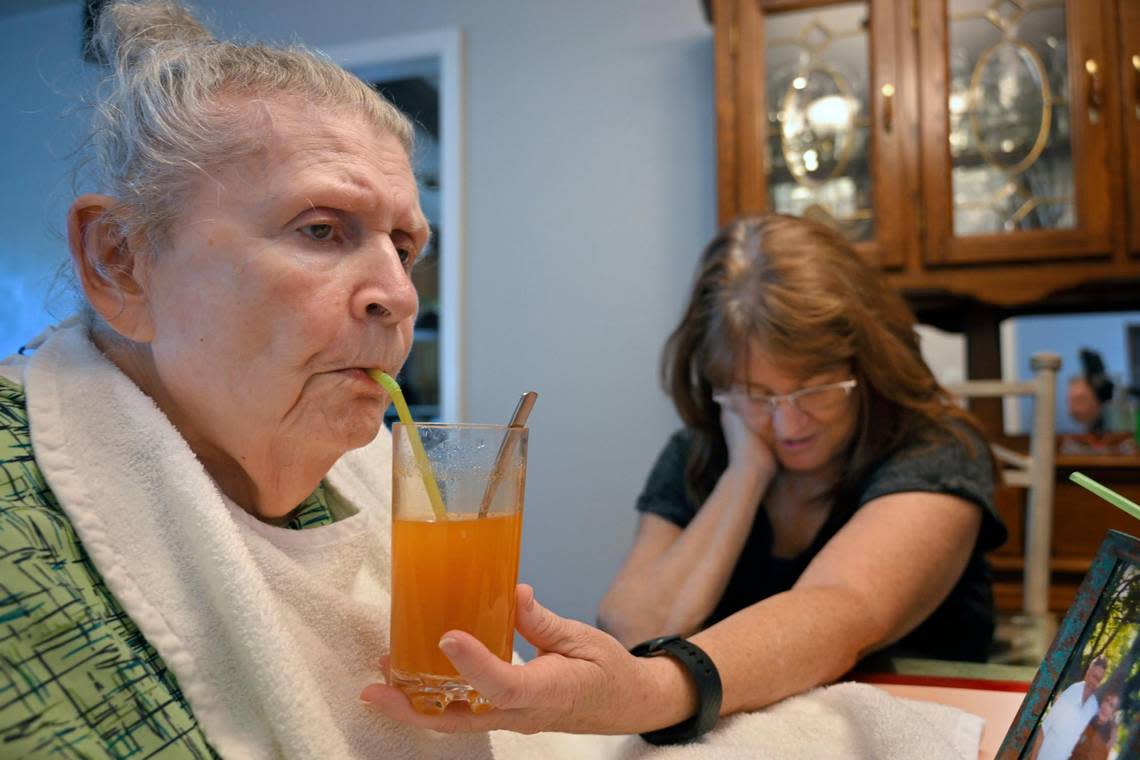
Kathy Dixon, a nurse for 40 years, 20 working hospice, agrees.
“Four years ago, if she went into a facility,” said Dixon, working with Harbor Hospice, and sitting with Ellen during a check-up, “I can almost bet all my money that she wouldn’t be with us. There’s just not the care there to do what Carol’s done.”
Cobbled care
Staying home full time simply is not financially possible for many. That leaves families to cobble together strategies — splitting hours of care among various family and friends or, if they can afford it, paying professional caregivers $25 to $45 an hour to come in for limited hours. Some who find that unaffordable take the chance of leaving their loved-one alone at home, if only for a few hours.
Others rely on technology to keep watch.
“They have video cameras,” Dixon said. “They go and do their job for two hours and watch, then come back. Or they have a service in for two hours, knowing someone is going to walk in and change their briefs...
“I wish I had the answers. We are in a crisis. I’ve been watching it for 10 years now. I see it every day. It’s just steamrolling ahead. ...We don’t have enough resources for people like Tami and Carol who want to take care of their loved one at home.”
Advocates in the LTSS world, Long-term Services & Supports, have for years been pushing for greater support for at-home caregivers, including more respite care, expanded psychological counseling, extended paid leave from work, or offering the option to pay for long-term care insurance as part of employee benefits.
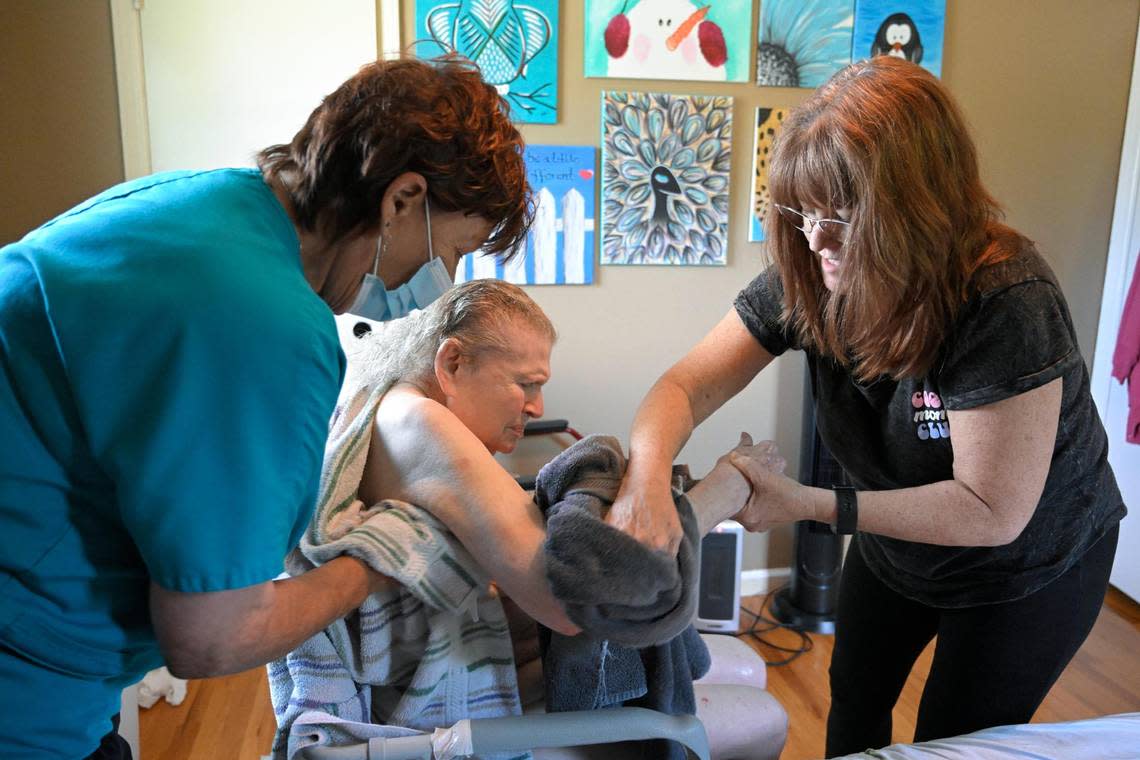
Under Medicaid, a much greater emphasis is being put on home and community-based services for caregivers.
Advocates see movement.
In September, the U.S. Department of Health and Human Services released its first National Strategy to Support Family Caregivers, which includes a list of 500 actions across state and federal agencies to support care.
In May 2021, lawmakers in both the House and Senate each introduced their own versions of a proposed Caring for Credit Act that would allow family caregivers to receive a tax credit of up to $5,000 per year for expenses. Both bills had broad bipartisan support and co-sponsors. Neither, however, advanced or were acted on.
Many, meanwhile, are looking to the state of Washington as a possible future model. In 2019, Gov. Jay Inslee signed a bill into law that created the WA Cares Fund. Beginning in July 2023, all Washington workers will be required to pay 58 cents for every $100 of their gross wages to the fund, which — like paying into Social Security — provides them a level of long-term care insurance. After a variable number of years, anyone who paid into the fund will be eligible to receive as much as $36,500 over one’s lifetime to put toward long-term care costs. The benefit payouts are scheduled to start in 2026.
According to a 2022 Associated Press-NORC poll, 75% of U.S. adults think that Medicare should play a major role in paying for long-term care.
Dixon and others note that one of the most common misconceptions they face among families is that Medicare already covers assisted living or memory units. It does not.
Medicare is the federal health insurance for people age 65 and older. What it does pay for is care, up to 100 days, in a skilled nursing facility. Those are facilities where nurses have specific skills, like putting in intravenous lines for kidney or heart problems or for physical or other types of rehabilitation.
It does not pay for custodial care, like memory units or assisted-living where residents need care with bathing, eating and such.
“The majority will say, ‘We’ve saved our entire lives,’” Dixon said. “Then they start having health issues. They want to leave money to their children. They realize it’s all probably going to go to health care.”
At the same time, their income through Social Security, pensions, veterans benefits and the like may be too high to be poor enough to qualify for Medicaid benefits.
‘Just Ellen and I’
At 9 p.m., Dowell lowers and angles Ellen into bed — a 14-hour day of caregiving, seven days a week for her, with rare breaks.
“I’m not really exhausted,” Dowell said. “It would just be nice that when I need to have time off, I can have time off. I’m here. And I can’t go anywhere unless somebody comes to relieve me.”
Every other Thursday, a volunteer does come to Dowell’s house between 6 and 9 p.m., three hours twice a month that Dowell will sometimes use to go to a movie or dinner. Her sons and daughter relieve her some nights after they finish work. And once a month, Dowell’s mother drives two hours down to give her a break. When she shops, it’s online and delivered to the door. DeFoe drops by once each week to bring groceries and somewhat relieve Dowell.
“I would love to be able to help more, relieve Carol more,” DeFoe said. “But to pay my bills and mom’s bills, I‘m already working 50, 60 hours a week. By the time I sit down, it’s 7, 8, 9 at night, and I’m exhausted. I feel guilty for not being able to help out more, but at this time, its just not possible.”
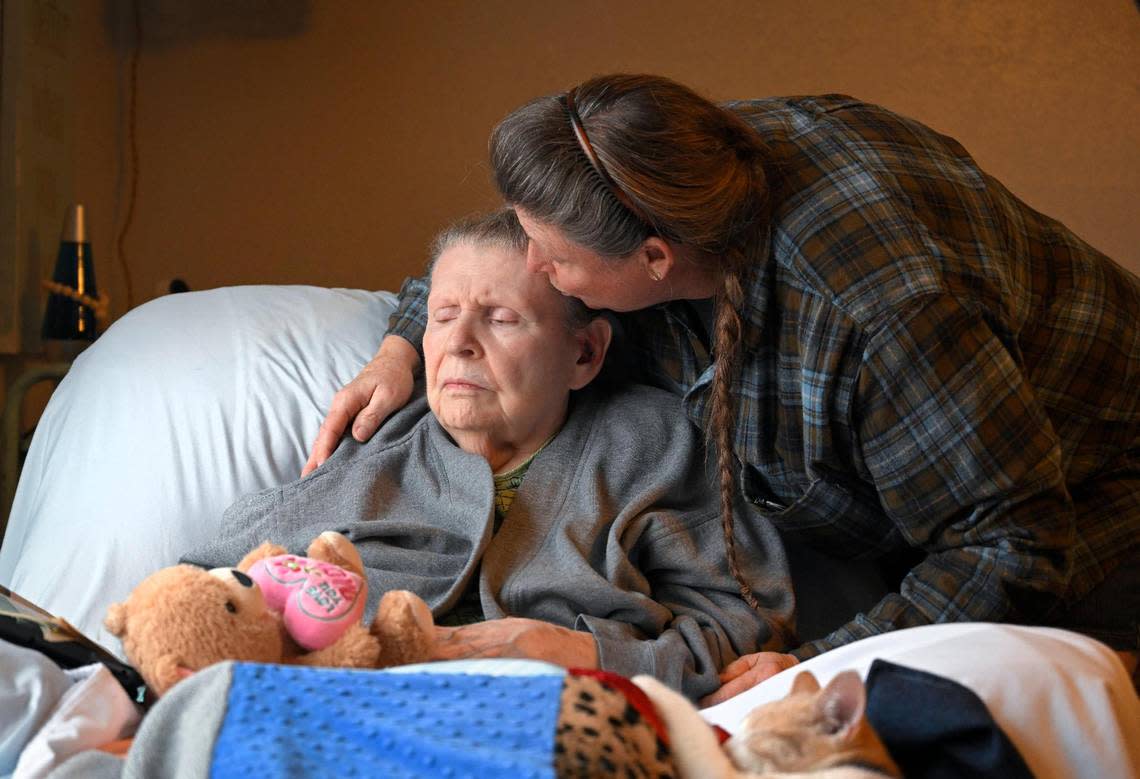
The emotional cost of Dowell’s 24/7 caregiving hit hardest in September. Her son, Keaton, crashed his motorcycle, vaulting him into a retaining wall. The impact severed his spine below his arms at age 27.
“He is completely paralyzed from the chest down,” Dowell said. Her son was most recently in a rehabilitation hospital in Nebraska.
DeFoe helped in those first few weeks and found other people to fill in so that Dowell could be with her son. But arranging even professional care can be hard. Ellen doesn’t just need to be looked after. She needs to be lifted, fed, bathed, maneuvered onto the toilet, cleaned, put to bed. Not all caregivers are willing to take on the job, and the amount they charge is too much.
“I can’t say there aren’t days when I just want to say ‘I’m done,’” Dowell said.
The first week of December passed and it had been three weeks since Dowell had seen her son.
“The hardest part is not being able to be up there with him,” she said. “With my husband two hours away, taking care of his dad, we don’t have the time to take off so I can care for him the way I want. We just don’t have it.”
Tomorrow she’d start another 14-hour day.
“It’s just Ellen and I,” Dowell said.
Need help with Azheimer’s or dementia?
Alzheimer’s Association 24/7 Helpline: 800-272-3900; www.alz.org/cwkansas
Central and Western Kansas Chapter - Alzheimer’s Association: 316-267-7333
